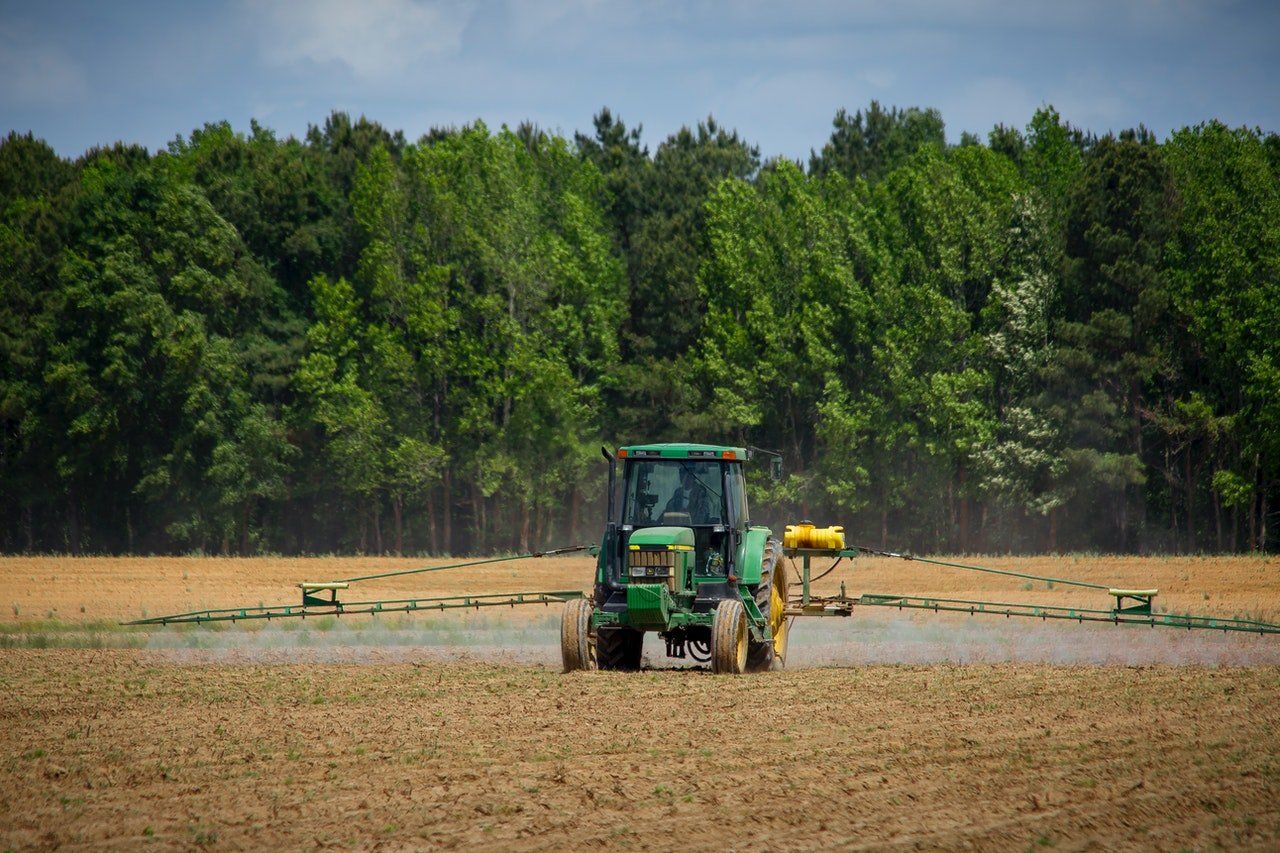
How To Use And Maintain Chemical Spraying Equipment
Blog » How To Use And Maintain Chemical Spraying Equipment
Chemicals like pesticides and fertilisers prove effective in various areas. You don't want a murder of crows to ruin your fresh maise crop or an army of lizards crawling up campus walls. However, most of these chemicals can also prove harmful to humans, especially after prolonged exposure.
Even if no fatalities occur, they can create health complications that can last for multiple generations. Parents exposed to sulphur-based compounds report increased cases of developmental disorders and physical disabilities. Therefore, learning how to use and maintain chemical spraying equipment properly should be necessary for every employee.
Still, that can be a tall order depending on your organisation's location, type, and size. Throughout this article, you'll learn how to categorise each piece of equipment, how to use it appropriately, and why a chemical spraying certificate can help make that job easier.
Types of Chemical Spraying Equipment in Use
From agriculture in the far open fields to municipal duties in a city, several types of chemical spraying equipment are used in Australia today. While the exact specifications vary widely, all of that machinery can be classified into four basic categories:
1. Manual Handheld Sprayers
Spraying equipment portable enough to be used by a single person comes in this category. It has a low storage capacity, usually within the range of 50-100 litres. Many backpack versions allow manual operation, although some handheld sprayers have built-in pumps and motors.
2. Powered Light Equipment
This equipment requires an external power source to operate. Typically, personnel use a small vehicle (like a car or ATV) to tow the equipment to cover as much area as possible. Equipment like green trolley sprayers and 12-Volt spot sprayers come in this category. Such machinery has a capacity ranging from 100 to 300 litres. Due to their lighter weight, they are readily deployable when attached to a crop duster.
3. Powered Heavy Equipment
Building upon the light equipment, powered heavy sprayers require a large platform such as a tractor to remain operational. They also have more capacity and higher power requirements. Spray trailers and full-size booms come under this category. They have capacities ranging from 500 to 1000 litres. Many even have a separate power source, like a Honda generator, to power the necessary functions.
4. Self-Propelled Spraying Equipment
This type of equipment is used for large-scale spraying yet has its mobile platform in-built. Drones and motorised crop cruisers come under this category. Such equipment can cover multiple acres of land with a single pass. Yet, the operations are pretty complex, and one should only operate such equipment when completing the farm chemical users course.
How to Correctly Set Up the Equipment
Different types of chemical spraying equipment require specific calibration, maintenance, and usage strategies. But, they all work on the same basic principle and, thus, contain comparable basic systems: tank, pump, flow-control assembly, agitation system, and distribution system.
Let's dive in and analyse how to set up each component correctly.
Tank
The tank stores the entirety of the required solution. After every use, it should be drained and cleaned thoroughly to allow the next refill of chemicals to remain pure. If possible, the tank should be disconnected from the primary system after use, as volatile chemicals can catch fire and damage the rest of the machine. It is a common occurrence in the unforgiving Australian heat.
Every tank has a specific capacity described on it or in the training manual. Employees should ensure not to overfill the tank to save on refill runs.
Pump
The pump is responsible for transporting the solution from the tank to the distribution system. As a rule of thumb, a pump should have a 25% greater capacity than the maximum limit of the nozzle. It helps balance the hindrance from the agitation system and ensures enough pressure for distribution. For agricultural equipment, a pump can be of any of four types:
Centrifugal pump- Piston pump
- Diaphragm pump
- Roller or rotary pump
When the equipment is not in use, a pump should ideally exert no pressure on the distribution system. It should only activate when the agitation system comes into play. Personnel can help ensure that the pump is calibrated for the application by checking the pressure gauge and using water as a testing fluid.
Agitation System
The agitation system helps keep the chemicals mixed in the tank. It helps maintain consistency when the chemicals make their way to the distribution system. For keeping the agitator functional, it is necessary to ensure that the valves connected to it are sealed. In some scenarios where the agitator is removable, it is a good idea to clean it manually from time to time.
Flow-Control Assembly
The pipes and valves that supply the chemicals to the distribution system constitute the flow-control assembly. Each part should be carefully inspected for any leaks or signs of rust. Using a pressure gauge, the operator can ensure whether certain valves deliver on the rated pressure that fits the sprayer's applications.
Distribution System
It is the business end of the sprayer. The distribution system is where the chemicals leave the sprayer and disperse over the intended area. The operator should clean the nozzles to remove any blockages for smooth functioning. Insecticides, fungicides, and weedicides all require a separate dispersion form. Therefore, before use, it is an excellent idea to ensure that the adjustments are working fine by testing the system with water.
Other systems, such as navigation and electricals, should also remain calibrated depending on the equipment used. You should ensure that all wires stay intact and there are no blown fuses within the circuit. Sometimes, you may need a multimeter to properly calibrate the voltage and current throughout the system.
Possible Damage and Risks with Chemical Spraying Equipment
As most chemical spraying equipment works with complex systems, getting careless with use or maintenance can result in damages and injuries ranging from minor irritation to hospital admissions. Some of the most commonly occurring instances are described below:
Over-pressurised tanks and valves can explode, resulting in high-impact physical damage to any bystanders and massive chemical spills. Operators should keep an eye on clogged-up hoses and nozzles as well.- Loose wiring in the machinery can electrocute the operators upon contact. Depending on the equipment in use, you can receive a shock of up to 3000 volts.
- Leaks in the tank and fluid-control systems can spill the chemicals in undesired locations, increasing the risk for other employees and farm animals.
- The Queensland government is quite severe regarding chemical spills. If your employees are found responsible or working without a chemical spraying certificate, you can be liable for a hefty fine of up to AUD 5,000. If the chemicals cause an injury, the court can even sentence you to serve jail time.
Training and Supervision of Employees
Now that you know how hard it is to look after each component, things should undoubtedly get you nervous when you put such equipment in someone else's hands. No matter which chemical you use, your employees should have the relevant training so that the equipment runs adequately and they remain safe from hazards.
Putting the right people to work should always be a priority. It is where the farm chemical users course becomes vital. Most people don't grow up around highly volatile chemicals, and there is only so much that you can teach an assistant within a reasonable time. But, you can streamline the process by introducing a chemical safety course as part of your induction program.
The farm chemical users course teaches the candidate how to store, transport, select, purchase, and use agricultural and veterinary chemicals responsibly.
Those who have had their chemical spraying certificate for a while can apply for a supervisor's position. They can become fully licensed to train recruits and show them the ropes attached to the operation of spraying equipment.
Safety Precautions for Chemical Spraying Equipment
As fungicides and pesticides are scientifically proven harmful to humans, you and your employees should exercise extreme caution around them. It doesn't matter how experienced you are; a moment's slip-up is enough to attract a heap of trouble.
For any agricultural operation, you should follow the below-mentioned safety protocols in addition to maintaining the chemical dispersal equipment:
- Limiting access to volatile chemicals: You should only allow personnel with a chemical spraying certificate anywhere near toxic solutions.
- Wearing adequate safety gear: When spraying chemicals, you should minimise the chance of them spilling on your person. Goggles, PPE kits, and face masks can assist with that.
- Not dining or using cosmetics in the workplace: Refrain from eating food items or applying cosmetics in areas susceptible to constant chemical spraying.
- Isolating the storage area: The site used to store the requisite chemicals should be far away from any residences, stables, or the main entrance to the property.
- Working in groups: Accidents can happen without warning, and you may need an extra pair of hands to get out of them. Therefore, it is always advisable to work in groups when spraying chemicals over an area.
Benefits of Countryco. Chemical Spraying Certificate
Of course, recruitment and training of reliable employees is a tall order when you have an entire farm to manage. Nevertheless, you can outsource the service to trained professionals who have been in the industry for decades. When choosing Countryco., you get the relevant chemical safety training, updated with the latest DEPI and EPA guidelines. We can conduct in-person classes throughout Queensland and New South Wales.
To secure a chemical spraying certificate for each employee, you can examine our training schedule to book a slot. Once registered on our official website, your employees can access the Student Portal and commence the course. If required, we can offer flexibility with the timeline so that the system doesn't impede your business plan.
Book your training session with us at Countryco Ag Services. Call us today!

